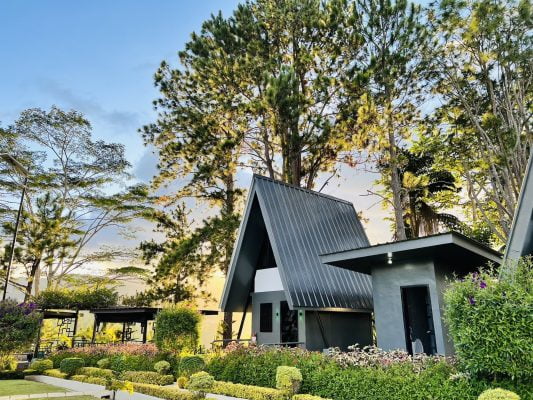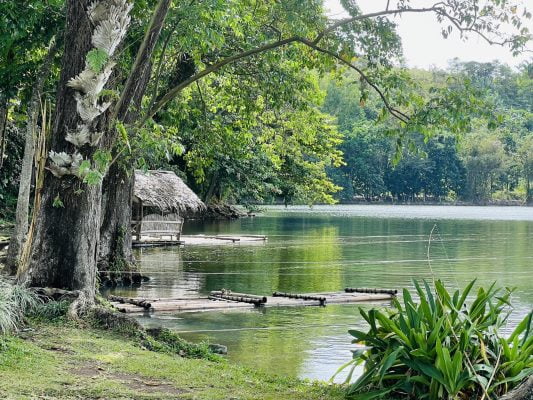November signals the start of the dry-cold season in the Philippines which is also the beginning of the peak tourist season. Hotels slowly fill up with reservations and some may even get fully booked, all because this period is also Semestral Break for most schools and universities.
With just a month to go before December, the entire country is now bedecked with twinkling lights, Christmas trees and Styrofoam snowmen. November marks the beginning of all-out sales in large shopping malls as everyone starts to shop for gifts to give as ‘pamasko’ to their loved ones.
The month starts with a much-awaited long weekend, November 1st being Undas, the Filipino version of the All Saint’s and All Soul’s Days. People flock to the cemeteries to pay homage to their loved ones and hold miniature family reunions in cramped spaces beside tombstones. Halloween is also becoming a popular festivity among the young, with kids participating in Trick or Treat parties and going house-to-house mostly in affluent neighborhoods. From the last week of October and well into the second week of November, jack o’ lanterns, skulls, skeletons and other scary contraptions sit side by side with the Christmas riffraff.
Here are some exciting events and festivals to watch out for this November in the Philippines. For official dates of these events this year, sign up for our newsletter where we announce them.
Banaag Festival

Anilao, Iloilo
Banaag Festival is a celebration of fire and light in the small town of Anilao in Iloilo. It is actually in commemoration of the town’s foundation. The word ‘banaag’ means bright in the local language called Hiligaynon. The festival features street dances during nighttime to emphasize the play of fire and light.
Undas

November 1-2
All over the country
In line with the celebration of the All Saint’s and All Soul’s Days, Filipinos converge in cemeteries to visit their dead and meet with family members. These days are declared non-working holidays hence the huge number of people in these places. As a tradition, families bring food to the cemeteries both to “offer” to their deceased loved ones and to share with other relatives. Traffic can be quite impossible during these days, especially on roads leading to cemeteries. Undas is a good time to watch and photograph people.
Negros Day/ El Cinco de Noviembre

November 5
Negros Island
This celebration commemorates the townsfolk’s revolution against their Spaniards in the year 1898. History has it that the Negrenses (townsfolk) were happy living with the colonizers until the movement for freedom in Luzon resonated with the sugar barons and planters of the province who later revolted against their lords. This event is actually made famous for the bluff which involved disguising sawali mats and nipa stalks as rifles and canons which drove the Spanish authorities away. This historical festival is celebrated all over Negros Island.
Pintaflores Festival

San Carlos City, Negros Occidental
‘Pinta’ means paint and ‘flores’ means flowers. The Pintaflores Festival features revelers dressed in ethnic-inspired costumes painted with large flower patterns. Even their bodies and faces are painted with flower designs. The festival is dedicated to San Carlos Borromeo, the city’s patron saint. Now on its 20th year, Pintaflores is an ultra-colorful festival with school children participating in street dances and other activities.
Sandurot Festival

Dumaguete City, Negros Oriental
After joining in the revelry of the Pintaflores, you can head on east to Dumaguete where the Sandurot Festival is celebrated. Dumaguete City is a melting pot of different cultures both foreign and local. The city embraces the influx of foreigners wishing to reside, study or stay for a long period. ‘Sandurot’ is the local word for arrival and this festival is a testimonial of the city’s warm welcome to different people and cultures.
Higantes Festival

Angono, Rizal
Higantes or giants dominate the streets of Angono as the town celebrates the feast of San Clemente, patron saint of Angono and of fishermen. During the festival, the image of the saint in papal vestments is carried by men followed by devotees called pahadores dressed in fishermen’s clothes, local costumes, wooden shoes and carrying fishing paraphernalia and 12-foot giants. These giants are made of paper-mâché created by locals all throughout the year.
Bonifacio Day

Nationwide
November starts with a holiday and ends with a holiday. Bonifacio Day is a day of remembrance to the revolutionary who started it all. Andres Bonifacio is one of the most prominent figures in history, being the founder of the Katipunan. He is considered as one of the bravest men born in the Philippines. Bonifacio Day is celebrated all over the country.
With just a month before the happiest season of the year, the Philippines is already bursting with the holiday spirits. November in the Philippines can be considered the grand opening salvo to the merriment in the coming month.
Visit Christmas in the Philippines for more Christmas-related posts.






